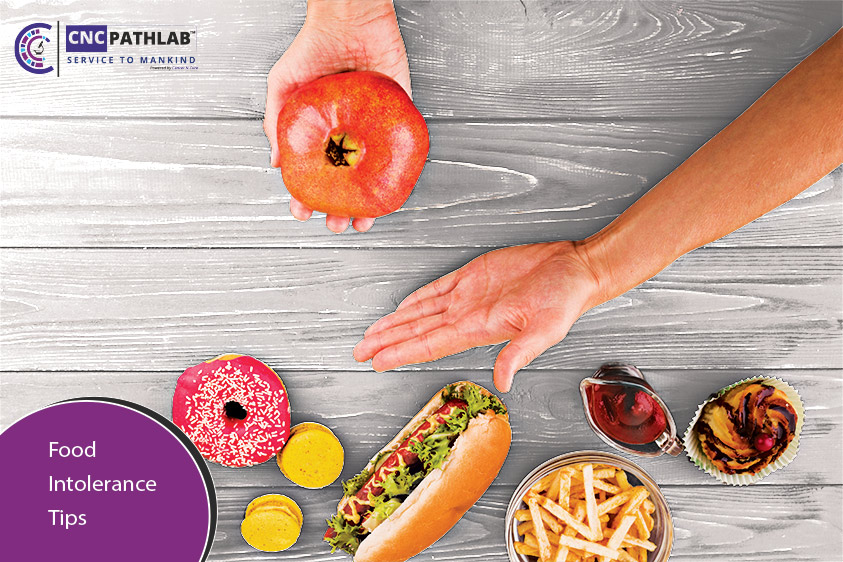How to Manage Food Intolerance Tips and Strategies
What are some tips for managing a food intolerance?
Food intolerance can be a challenging condition to manage, especially if you are not fully aware of your triggers. However, by making some simple changes to your diet and lifestyle, you can significantly reduce your symptoms and improve your quality of life. In this post, we will be sharing some tips for managing food intolerance.
1. Identify your triggers
The first step in managing food intolerance is to identify the foods that trigger your symptoms. Keep a food diary where you record the foods you eat and the symptoms you experience. This will help you identify patterns and pinpoint the foods that are causing your symptoms.
2. Avoid trigger foods
Once you have identified your trigger foods, the best way to manage your food intolerance is to avoid them. This can be challenging, but with some planning and preparation, it is possible. Learn to read food labels carefully, and avoid eating out as much as possible. When eating out, inform the server that you have a food intolerance and ask if they can accommodate your needs.
3. Substitute for trigger foods
When avoiding trigger foods, it can be helpful to find suitable substitutes. For example, if you are lactose intolerant, you can try lactose-free milk or dairy-free alternatives. If you are gluten intolerant, you can try gluten-free bread or pasta.
4. Cook at home
Cooking at home is an excellent way to manage food intolerance. It allows you to control the ingredients in your food and ensure that your meals are free from trigger foods. Experiment with new recipes and ingredients to make sure your meals are delicious and satisfying.
5. Seek advice from a healthcare professional
If you are struggling to manage your food intolerance, seek advice from a healthcare professional. They can help you identify your triggers, provide guidance on suitable substitutes, and help you develop an individualized management plan.
In summary, managing food intolerance requires careful attention to your diet and lifestyle. By identifying your triggers, avoiding trigger foods, finding suitable substitutes, cooking at home, and seeking advice from a healthcare professional, you can significantly reduce your symptoms and improve your quality of life. Remember, it may take some trial and error to find a management plan that works for you, but don't give up. With patience and persistence, you can successfully manage your food intolerance.
How can I identify which foods to avoid if I have a food intolerance?
Food intolerances can be challenging to identify, especially if you are unsure about which foods are causing your discomfort. However, with a little bit of effort, you can easily identify the foods you should avoid and improve your overall health.
Here are some tips to help you identify which foods to avoid if you have food intolerance:
1. Keep a food diary: Start by keeping a record of everything you eat and drink, including the time of day and any symptoms you experience afterward. This can help you identify patterns and pinpoint which foods are causing your discomfort.
2. Elimination diet: Try eliminating one food or food group from your diet for a period of time and see if your symptoms improve. Once you have identified the problematic food, try eliminating it completely from your diet.
3. Get tested: If you are unsure about which foods are causing your discomfort, speak to your healthcare provider about getting tested for food intolerances. Blood tests and skin prick tests can help identify specific food allergies and intolerances.
4. Read food labels: Always read food labels carefully to identify potential allergens and intolerances. Foods containing peanuts, tree nuts, wheat, dairy, and soy are common allergens.
5. Seek advice from a registered dietitian: Consulting with a registered dietitian can help you create a personalized diet plan that meets your nutritional needs while avoiding foods that trigger your symptoms.
In conclusion, identifying which foods to avoid if you have a food intolerance can be challenging, but with the help of a healthcare professional and some effort on your part, it is possible. Keeping a food diary, trying an elimination diet, getting tested, reading food labels, and seeking advice from a registered dietitian are all effective strategies for managing food intolerance.
Remember, managing food intolerance is not just about avoiding certain foods. It is also about finding suitable substitutes, cooking at home, and making lifestyle changes that support your overall health and well-being. With patience and persistence, you can successfully manage your food intolerance and improve your quality of life.
What strategies can I use to reduce symptoms of food intolerance?
Food intolerance can be a frustrating and uncomfortable experience for many individuals. While there is no cure for food intolerance, there are several strategies that can be implemented to reduce symptoms. Here are some effective strategies you can use to reduce the symptoms of food intolerance:
1. Identify trigger foods: Keeping a food diary can help you identify the foods that trigger your symptoms. Once you've identified the trigger foods, you can eliminate them from your diet.
2. Elimination diet: An elimination diet involves removing all potential trigger foods from your diet for a period of time and then slowly reintroducing them one by one to see which foods are causing your symptoms.
3. Enzyme supplements: Enzyme supplements can help break down the food in your digestive system and reduce symptoms. For example, lactase supplements can help individuals who are lactose intolerant.
4. Probiotics: Probiotics can help improve gut health, which can reduce symptoms of food intolerance. Probiotics can be found in foods like yogurt, kefir, and sauerkraut or taken as a supplement.
5. Avoid cross-contamination: If you are intolerant to a particular food, it is important to avoid cross-contamination. This means using separate utensils, dishes, and cooking surfaces when preparing and cooking food.
6. Reduce stress: Stress can exacerbate symptoms of food intolerance. Implementing stress-reducing techniques like meditation, yoga, or deep breathing can help reduce symptoms.
7. Seek medical advice: If your symptoms persist despite implementing these strategies, it is important to seek medical advice from a healthcare professional. They may be able to recommend additional strategies or treatments that can help manage your food intolerance.
In conclusion, managing food intolerance requires a combination of patience, persistence, and attention to detail. By implementing these strategies and making lifestyle changes, you can successfully manage your food intolerance and improve your overall health and well-being. Remember to always seek medical advice if your symptoms persist or worsen. With the right strategies and support, you can enjoy a happy and healthy life, even with food intolerance.
How can I create a meal plan to accommodate a food intolerance?
Creating a meal plan that accommodates a food intolerance can be challenging, but with careful planning and attention to detail, it is possible to create a delicious and nutritious meal plan that meets your dietary needs. Here are some tips to get you started:
1. Identify your food intolerance: The first step in creating a meal plan is to identify the food(s) that you are intolerant to. This could include anything from gluten and dairy to nuts and eggs. Once you know what foods to avoid, you can begin to plan your meals accordingly.
2. Consult a registered dietitian: If you are unsure about how to create a meal plan that accommodates your food intolerance, it is recommended that you consult a registered dietitian. They can help you to identify suitable alternatives and ensure that your meal plan is nutritionally balanced.
3. Make a list of suitable foods: Once you know what foods to avoid, make a list of suitable alternatives. This will help you to plan your meals and ensure that you have a variety of options to choose from.
4. Plan your meals in advance: Planning your meals in advance is essential when you have a food intolerance. This will help you to avoid accidentally consuming foods that you are intolerant to and ensure that you have suitable alternatives on hand.
5. Experiment with recipes: There are many delicious recipes out there that are suitable for people with food intolerances. Experiment with different recipes and find ones that you enjoy and that meet your dietary needs.
6. Read food labels: Always read food labels carefully to ensure that the products do not contain any ingredients that you are intolerant to. This includes checking for hidden sources of allergens, such as soy lecithin or whey protein.
7. Be prepared when eating out: When eating out, do your research beforehand and choose restaurants that offer suitable options. You can also call ahead to confirm that they can accommodate your dietary needs. Additionally, bringing your own snacks or meals is always a good idea to ensure that you have something safe to eat.
By following these tips and strategies, you can create a meal plan that accommodates your food intolerance and helps you to maintain a healthy and balanced diet. Remember to be patient and persistent, and to seek the advice of a registered dietitian if you need additional support. With a little bit of planning and effort, you can successfully manage your food intolerance and continue to enjoy delicious and nutritious meals.
What are the most common food intolerance tests?
Food intolerance is a condition where a person has difficulty digesting certain foods. It can be caused by a reaction to certain compounds found in food, such as lactose or gluten. Symptoms of food intolerance can range from mild to severe and can include bloating, gas, diarrhea, and stomach pain. Food intolerance tests are used to identify the specific foods that trigger symptoms in an individual. In this blog post, we will discuss the most common food intolerance tests.
1. Elimination of diet
The elimination diet is the most common food intolerance test. It involves removing certain foods from your diet that may be causing symptoms and then reintroducing them one at a time. This process can take several weeks to complete and requires careful tracking of symptoms and food intake.
2. Skin prick test
A skin prick test involves pricking the skin with a small amount of food extract and observing the reaction. If there is a reaction, it may indicate an intolerance to that food. This test is commonly used for allergies but can also be used to identify food intolerances.
3. Blood test
A blood test can be used to identify food intolerances by measuring the amount of antibodies the body produces in response to specific foods. This test is often more expensive than other tests and is not always reliable.
4. Breath test
A breath test can be used to identify food intolerances by measuring the amount of hydrogen and methane gas produced by the body when certain foods are digested. This test is commonly used to detect lactose intolerance.
It is important to note that food intolerance tests should always be done under the supervision of a healthcare professional, as they can have limitations and may not provide a definitive diagnosis. Additionally, it is essential to remember that the elimination diet is not a long-term solution, and a registered dietitian can help you create a balanced and varied diet that accommodates your food intolerance while meeting your nutritional needs.
In conclusion, managing food intolerance requires patience, persistence, and a willingness to adapt your diet to your individual needs. By working with a healthcare professional and using the most common food intolerance tests, you can identify your triggers and create a meal plan that is customized to your needs. Remember that food intolerance is not a one-size-fits-all approach and that what works for one person may not work for another. By being proactive and seeking support when needed, you can successfully manage your food intolerance and continue to enjoy a healthy and fulfilling life.


.jpg)


.jpg)
